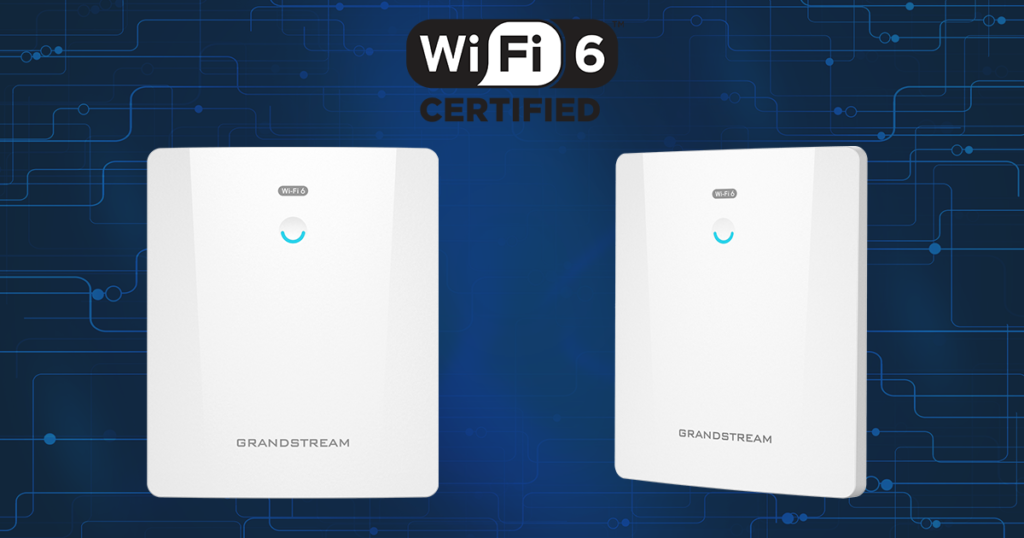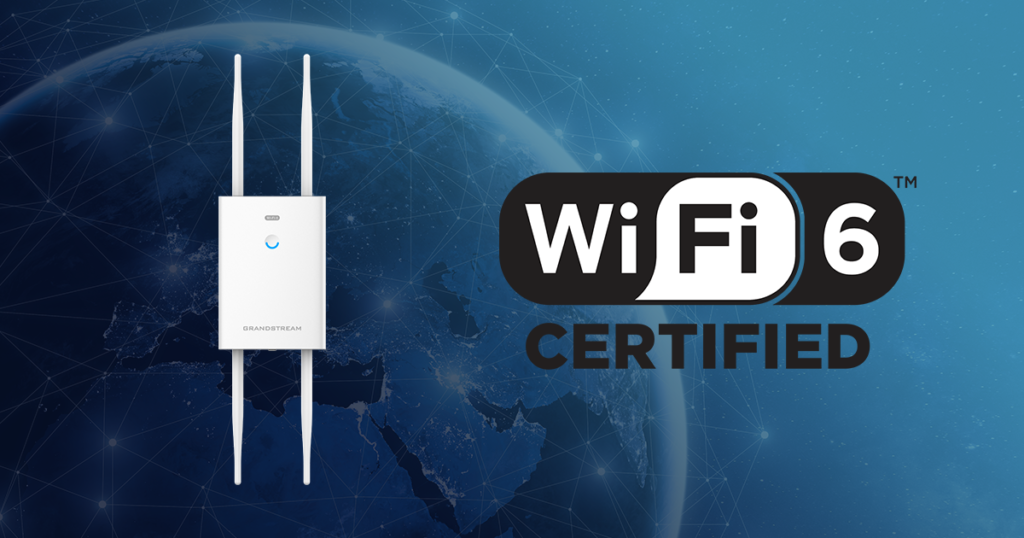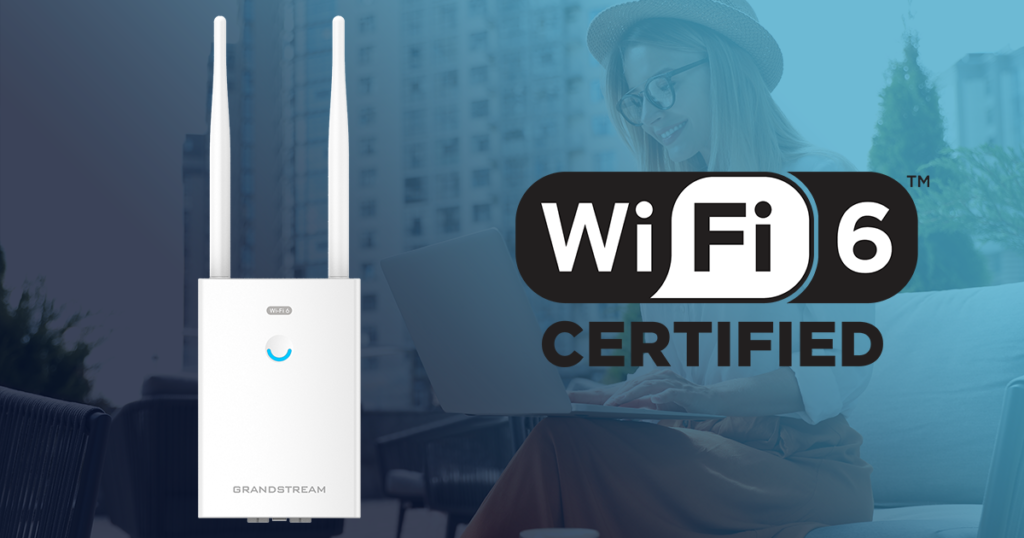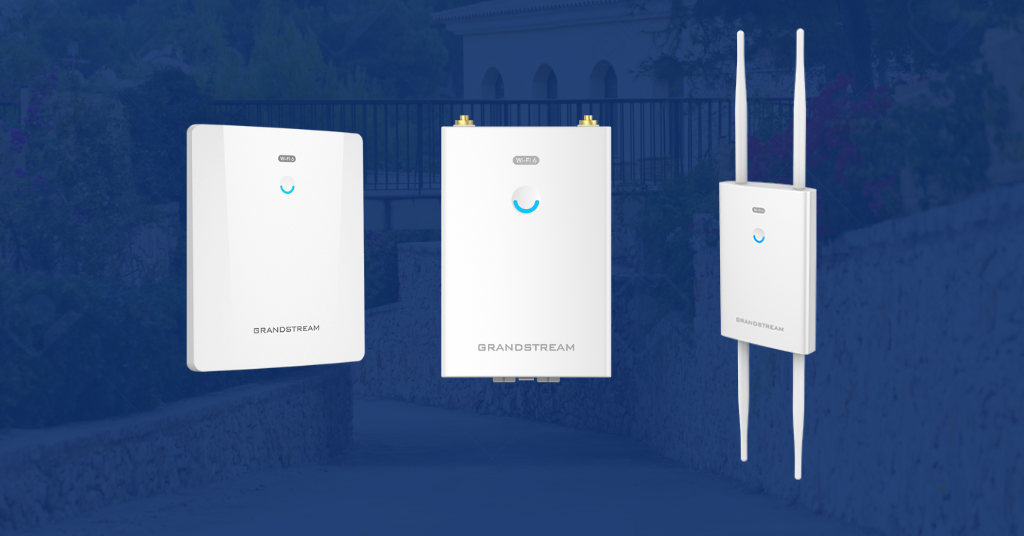In today’s hyper-connected world, ensuring strong and seamless Wi-Fi coverage outdoors is just as important as it is indoors. Whether you’re setting up Wi-Fi for a university campus, a large resort, a warehouse, or an outdoor event venue, a reliable Outdoor Access Point is crucial to keep everyone connected.
Grandstream, a leading brand in networking solutions, offers some of the most robust and feature-rich Outdoor Access Points on the market. But before choosing the right one, it’s essential to understand the key features that make an Outdoor Access Point truly effective and worth your investment.
Let’s dive into what to look for when selecting an Outdoor Access Point to ensure you get the best performance, durability, and scalability for your outdoor Wi-Fi network.
Top Outdoor Wi-Fi Access Points
Designed for extended coverage, weather resistance, and high user capacity, it ensures seamless internet access wherever you need it — from campuses and stadiums to outdoor events and large open areas.
GWN7664ELR
The GWN7664ELR is an enterprise-grade long-range 802.11ax Wi-Fi 6 access point for medium-to-large businesses and enterprises who need to provide long-range coverage in outdoor spaces.

- 6 Gbps aggregate wireless throughput, 2.5 Gbps RJ45, and 2.5 Gbps SFP wireline ports
- Dual-band 4×4:4 MU-MIMO with OFDMA technology
- Self-power adaptation upon auto-detection of PoE or PoE+
- Support 512 concurrent Wi-Fi client devices
- Up to 300-meter coverage range
GWN7664LR
The GWN7664LR is a high-end outdoor 802.11ax 4×4:4 Wi-Fi 6 access point for medium-to-large businesses and enterprises who need to provide long-range coverage in both indoor and outdoor spaces

- 3.55Gbps aggregate wireless throughput, 2.5Gbps aggregate wired throughout
- Dual-band 4×4:4 MU- MIMO with DL/UL OFDMA technology
- Self power adaptation upon auto detection of PoE or PoE+
- Support 750+ concurrent Wi-Fi client devices
GWN7660LR
The GWN7660LR is a long-range 802.11ax Wi-Fi 6 access point designed to provide next generation network coverage for indoor and outdoor environments.

- 1.77Gbps aggregate wireless throughput and2x Gigabit Ethernet ports
- Dual-band 2×2:2 MU- MIMO with DL/UL OFDMA technology
- Self power adaptation upon auto detection of PoE or PoE+
- Support 500+ concurrent Wi-Fi client devices
- Up to 250-meter coverage range
Features and Benefits
Grandstream’s Outdoor Access Points are designed with advanced technologies and user-centric benefits that make them stand out from the crowd. Let’s explore the essential features and the powerful advantages they bring to your outdoor connectivity strategy.
Extended Coverage
One of the primary reasons to deploy an Outdoor Access Point is to extend Wi-Fi coverage beyond indoor areas. Unlike an indoor access point, an outdoor model is specifically designed to broadcast signals over larger, open spaces.
With extended coverage, you eliminate dead zones and provide seamless roaming experiences, which is crucial for applications like video streaming, VoIP calls (including PBX Solution integrations), and security surveillance systems.
Weather Resistance
An Outdoor Access Point must be capable of withstanding harsh environmental conditions. Rain, heat, dust, and extreme temperatures can all impact performance if the access point isn’t built to handle them.
Grandstream designs its Outdoor Access Points with robust IP-rated enclosures (often IP66 or higher), which protect the device from water, dust, and other elements. This means you can deploy them confidently in virtually any outdoor setting without worrying about damage or frequent maintenance.
High User Density Support
Modern outdoor environments—think sports arenas, open-air malls, and outdoor festivals—often require support for hundreds or even thousands of simultaneous connections.
Whether it’s students connecting to online resources on campus, guests uploading photos at a concert, or warehouse staff using connected devices, high user density support is critical to delivering an exceptional experience.
Security and Management Features
Security is always a top priority when deploying any network device, and an Outdoor Access Point is no exception. Grandstream Outdoor Access Points come with enterprise-grade security features such as WPA3 encryption, secure guest networks, and VLAN support.
When paired with network switches, you can create a fully managed network that seamlessly integrates indoor and outdoor coverage, providing a unified and secure connectivity experience.
Seamless Integration with Other Solutions
An outdoor access point should not work in isolation. Grandstream’s solutions are designed to integrate seamlessly with other components like Network Switches and PBX Solutions.
For example, you can extend your indoor Wi-Fi coverage outdoors without creating separate SSIDs or authentication methods. This ensures smooth roaming and simplifies network management.
Power over Ethernet (PoE) Support
Installing an outdoor access point in open spaces can be challenging if there’s no power outlet nearby. That’s why PoE support is a must-have feature.
Grandstream’s outdoor access points support PoE, allowing both power and data to be delivered through a single Ethernet cable. This simplifies installation, reduces costs, and offers greater flexibility in terms of placement.
Advanced Performance Features
Beyond basic connectivity, modern Outdoor Access Points should include features that enhance overall performance. These include:
- Dual-band or tri-band operation for optimal traffic distribution.
- Load balancing to ensure no single access point is overloaded.
- Automatic channel selection to minimize interference from other wireless devices.
Conclusion
Selecting the right Outdoor Access Point is crucial for creating a reliable and secure outdoor Wi-Fi network. By focusing on key features like extended coverage, weather resistance, high user density support, security, seamless integration, and advanced performance, you can ensure your investment delivers maximum value.
Grandstream offers a wide range of Outdoor Access Points tailored to meet different needs and environments. From campus grounds to large event venues, their solutions provide the robust and flexible connectivity today’s organizations demand.
FAQ
1. What is an outdoor wireless access point?
An outdoor wireless access point, or Outdoor Access Point, is a networking device designed to provide Wi-Fi coverage in outdoor areas. It extends your wireless network beyond the walls of a building, offering connectivity in open spaces like campuses, parks, and industrial sites.
2. What are the differences between outdoor and indoor access points?
The primary difference is in design and durability. An Outdoor Access Point is built to withstand weather elements like rain, heat, and dust, featuring weatherproof enclosures and higher power output for extended range. In contrast, an Indoor Access Point is designed for controlled indoor environments without exposure to harsh conditions.
3. Where to place an outdoor access point?
You should place an Outdoor Access Point in an elevated and central location to maximize coverage and reduce interference. Make sure it’s mounted securely on walls, poles, or rooftops and within the range of your Network Switches for seamless integration and power supply (if using PoE).
4. Which is better, Wi-Fi or access point?
This is a common confusion. Wi-Fi refers to the wireless network technology, while an access point is a device that provides Wi-Fi connectivity. So, it’s not a question of one being better than the other; rather, an Outdoor Access Point is essential for delivering Wi-Fi in outdoor areas.
